- Home
- Isaac Asimov
Asimov's New Guide to Science Page 35
Asimov's New Guide to Science Read online
Page 35
Some of the Antarctic meteorites are strange indeed. In January 1982, a greenish-tan meteoritic fragment was discovered and, upon analysis, proved to have a composition remarkably like some of the moon rocks brought back by the astronauts. There is no easy way of demonstrating how a piece of lunar material could have been blasted into space and come to Earth, but certainly that is a possibility.
Then, too, some meteoric fragments in Antarctica have, when heated, given off gases, which proved to have a composition much like the Martian atmosphere. What’s more, these meteorites seemed to be only 1,300,000,000 years old rather than 4,500,000,000 years old as ordinary meteorites are. About 1,300,000,000 years ago, the Martian volcanoes may have been violently active. It may be that some meteorites are pieces of Martian lava somehow blown to Earth.
The ages of meteorites (computed by methods that will be described in chapter 7) are important tools, by the way, in the determination of the age of the earth and of the solar system generally.
Air: Keeping It and Getting It
Perhaps before we wonder how the earth got its atmosphere, we should consider how it has managed to hang on to it through all the eons of whirling and wheeling through space. The answer to the latter question involves something called escape velocity.
ESCAPE VELOCITY
If an object is thrown upward from the earth, the pull of gravity gradually slows it until it comes to a momentary halt and then falls back. If the force of gravity were the same all the way up, the height reached by the object would be proportional to its initial upward velocity: that is, it would reach four times as high when launched at a speed of 2 miles an hour as it would when it started at 1 mile an hour (energy increases as the square of the velocity).
But the force of gravity does not remain constant: it weakens slowly with height. (To be exact, it weakens as the square of the distance from the earth’s center.) Let us say we shoot an object upward with a velocity of 1 mile per second: it will reach a height of 80 miles before turning and falling (if we ignore air resistance). If we were to fire the same object upward at 2 miles per second, it would climb higher than four times that distance. At the height of 80 miles, the pull of the earth’s gravity is appreciably lower than at ground level, so that the object’s further flight would be subject to a smaller gravitational drag. In fact, the projectile would rise to 350 miles, not 320.
Given an initial upward velocity of 6.5 miles per second, an object will climb 25,800 miles. At that point the force of gravity is not more than 1/40 as strong as it is on the earth’s surface. If we added just 1/10 of a mile per second to the object’s initial speed (that is, launched it at 6.6 miles per second), it would go up to 34,300 miles.
It can be calculated that an object fired up at an initial speed of 6.98 miles per second will never fall back to the earth. Although the earth’s gravity will gradually slow the object’s velocity, its effect will steadily decline, so that it will never bring the object to a halt (zero velocity) with respect to the earth. (So much for the cliché that “everything that goes up must come down.”)
The speed of 6.98 miles per second, then, is the earth’s escape velocity. The velocity of escape from any astronomical body can be calculated from its mass and size. From the moon, it is only 1.5 miles per second; from Mars, 3.2 miles per second; from Saturn, 23 miles per second; from Jupiter, the most massive planet in the solar system, it is 38 miles per second.
Now all this has a direct bearing on the earth’s retention of its atmosphere. The atoms and molecules of the air are constantly flying about like tiny missiles. Their individual velocities vary a great deal, and the only way they can be described is statistically: for example, giving the fraction of the molecules moving faster than a particular velocity, or giving the average velocity under given conditions. The formula for doing this was first worked out in 1860 by James Clerk Maxwell and the Austrian physicist Ludwig Boltzmann, and it is called the Maxwell-Boltzmann law.
The mean velocity of oxygen molecules in air at room temperature turns out to be 0.3 mile per second. The hydrogen molecule, being only 1/16 as heavy, moves on the average four times as fast, or 1.2 miles per second, because, according to the Maxwell-Boltzmann law, the velocity of a particular particle at a particular temperature is inversely proportional to the square root of its molecular weight.
It is important to remember that these are only average velocities. Half the molecules go faster than the average; a certain percentage go more than twice as fast as the average; a smaller percentage more than three times as fast; and so on. In fact, a tiny percentage of the oxygen and hydrogen molecules in the atmosphere go faster than 6.98 miles per second, the escape velocity.
In the lower atmosphere, these speedsters cannot actually escape, because collisions with their slower neighbors slow them down. But in the upper atmosphere, their chances are much better. First of all, the unimpeded radiation of the sun up there excites a large proportion of them to enormous energy and great speeds. In the second place, the probability of collisions is greatly reduced in the thinner air. Whereas a molecule at the earth’s surface travels only 4 millionths of an inch (on the average) before colliding with a neighbor, at a height of 65 miles its average free path before colliding is 4 inches; and at 140 miles, it is 1,100 yards. There the average number of collisions encountered by an atom or molecule is only 1 per second, against 5 billion per second at sea level. Thus, a fast particle at a height of 100 miles or more stands a good chance of escaping from the earth. If it happens to be moving upward, it is moving into regions of ever less density and experiences an ever smaller chance of collision, so that it may in the end depart into interplanetary space, never to return.
In other words, the earth’s atmosphere leaks. But the leakage applies mainly to the lightest molecules. Oxygen and nitrogen are heavy enough so that only a tiny fraction of them achieves the escape velocity, and not much oxygen or nitrogen has been lost from the earth since their original formation. On the other hand, hydrogen and helium are easily raised to escape velocity. Consequently it is not surprising that no hydrogen or helium to speak of remains in the atmosphere of the earth today.
The more massive planets, such as Jupiter and Saturn, can hold even hydrogen and helium, so they may have large and deep atmospheres composed mostly of these elements (which, after all, are the most common substances in the universe). The hydrogen present in vast quantities would react with other elements present, so that carbon, nitrogen, and oxygen would be present only in the form of hydrogen-containing compounds: methane (CH4), ammonia (NH3), and water (H2O), respectively. The ammonia and methane in Jupiter’s atmosphere, although present as relatively small-concentration impurities, were first discovered (in 1931, by the German-American astronomer Rupert Wildt) because these compounds produce noticeable absorption bands in the spectra, whereas hydrogen and helium do not. The presence of hydrogen and helium were detected by indirect methods in 1952. And, of course, the Jupiter probes, from 1973 on, confirmed these findings and gave us further details.
Working in the other direction, a small planet like Mars is less able to hold even the comparatively heavy molecules and has an atmosphere only 1 hundredth as dense as our own. The moon, with a smaller escape velocity, cannot hold any atmosphere to speak of and is airless.
Temperature is just as important a factor as gravity. The Maxwell-Boltzmann equation says that the average speed of particles is proportional to the square root of the absolute temperature. If the earth were at the temperature of the sun’s surface, all the atoms and molecules in its atmosphere would be speeded up four to five times, and the earth could no more hold on to its oxygen and nitrogen than it could to hydrogen or helium.
Thus, Mercury has 2.2 times the surface gravity of the moon and should do a better job at holding an atmosphere. Mercury is, however, considerably hotter than the moon and so ends up just as airless as the moon.
Mars has a surface gravity only slightly greater than that of Mercury but is co
nsiderably colder than Mercury and even than Earth or the moon. That Mars manages to have a thin atmosphere is more because of its low temperature than of its moderately high surface gravity. The satellites of Jupiter arc still colder than Mars, but also have a surface gravity in the range of the moon and so do not hold an atmosphere. Titan, the large satellite of Saturn, is so cold, however, that it can hold a thick nitrogen atmosphere. Perhaps Triton, the large satellite of Neptune, may do so also.
THE ORIGINAL ATMOSPHERE
The earth’s possession of an atmosphere is a strong point against the theory that it and the other planets of the solar system originated from some catastrophic accident, such as near-collision between another sun and ours. It argues, rather, in favor of the dust-cloud and planetesimal theory. As the dust and gas of the cloud condensed into planetesimals and these in turn collected to form a planetary body, gas might have been trapped within a spongy mass, like air in a snowbank. The subsequent gravity contraction of the mass might then have squeezed out the gases toward the surface. Whether a particular gas would be held in the earth would depend in part on its chemical reactivity. Helium and neon, though they must have been among the most common gases in the original cloud, are so inert chemically that they form no compounds and would have escaped as gases in short order. Therefore the concentrations of helium and neon on the earth are insignificant fractions of their concentrations in the universe generally. It has been calculated, for instance, that the earth has retained only 1 out of every 50 billion neon atoms present in the original cloud of gas, and our atmosphere has even fewer, if any, of the original helium atoms. I say “if any” because, while there is a little helium in the atmosphere today, all of it may come from the breakdown of radioactive elements and leakage of helium trapped in cavities underground.
On the other hand, hydrogen, though lighter than helium or neon, has been captured with greater efficiency because it has combined with other substances, notably with oxygen to form water. It is estimated that the earth still has 1 out of every 5 million hydrogen atoms that were in the original cloud.
Nitrogen and oxygen illustrate the chemical aspect even more neatly. Although the nitrogen molecule and the oxygen molecule are about equal in mass, the earth has held on to 1 out of 6 of the original atoms of highly reactive oxygen but on to only 1 out of every 800,000 of inert nitrogen.
When we speak of gases of the atmosphere, we have to include water vapor, and here we get into the interesting question of how the oceans originated. In the early stages of the earth’s history, even if our planet was then only moderately hot, all the water must have been in the form of vapor. Some geologists believe that the water was then concentrated in the atmosphere as a dense cloud of vapor, and that, after the earth cooled, it fell in torrents to form the ocean. On the other hand, some geologists maintain that our oceans have been built up mainly by water seeping up from the earth’s interior. Volcanoes show that there still is a great deal of water in the crust, for the gas they discharge is mostly water vapor. If that is so, the oceans may still be growing, albeit slowly.
But was the earth’s atmosphere always what it is today, at least since its formation in the first place? It seems unlikely. For one thing, molecular oxygen, which makes lip one-fifth of the volume of the atmosphere, is so active a substance that its presence in free form is extremely unlikely, unless it were continuously being produced. Furthermore, no other planet has an atmosphere anything like our own, so that one is strongly tempted to conclude that Earth’s atmosphere is the result of unique events (as, for instance, the presence of life on this planet, but not on the others).
Harold Urey has presented detailed arguments in favor of the idea that the original atmosphere was composed of ammonia and methane. Hydrogen, helium, carbon, nitrogen, and oxygen are the predominant elements in the universe, with hydrogen far and away the most common. In the presence of such a preponderance of hydrogen, carbon would be likely to combine with hydrogen to form methane (CH4), nitrogen with hydrogen to form ammonia (NH3), and oxygen with hydrogen to form water (H2O). Helium and excess hydrogen would, of course, escape; the water would form the oceans; the methane and ammonia, as comparatively heavy gases, would be held by the earth’s gravity and so constitute the major portion of the atmosphere.
If all the planets with sufficient gravity to hold an atmosphere at all began with atmospheres of this type, they would nevertheless not all keep it. Ultraviolet radiation from the sun would introduce changes. These changes would be minimal for the outer planets, which, in the first place, received comparatively little radiation from the distant sun and, in the second place, had vast atmospheres capable of absorbing considerable radiation without being perceptibly changed. The outer planets, therefore, would keep the hydrogen / helium / ammonia / methane atmospheres to the present day.
Not so the five inner worlds of Mars, Earth, our moon, Venus, and Mercury. Of these, the moon and Mercury are too small, too hot, or both to retain any perceptible atmosphere. This leaves Mars, Earth, and Venus, with thin atmospheres of chiefly ammonia, methane, and water to begin with. What would happen?
Ultraviolet radiation striking water molecules in the upper primordial atmosphere of the earth would break them apart to hydrogen and oxygen (photodissociation). The hydrogen would escape, leaving oxygen behind. Being reactive, however, the molecules would react with almost any other molecule in the neighborhood. They would react with methane (CH4) to form carbon dioxide (CO2) and water (H2O). They would react with ammonia (NH3) to form free nitrogen (N2) and water. Very slowly, but steadily, the atmosphere would be converted from methane and ammonia to nitrogen and carbon dioxide. The nitrogen would tend to react slowly with the minerals of the crust to form nitrates, leaving carbon dioxide as the major portion of the atmosphere.
Will water continue to photodissociate, however? Will hydrogen continue to escape into space, and will oxygen continue to collect in the atmosphere? And if oxygen does collect and finds nothing to react with (it cannot react further with carbon dioxide), then will it not add a proportion of molecular oxygen to the carbon dioxide present (thus accounting for earth’s atmospheric oxygen)? The answer is a resounding No.
Once carbon dioxide becomes the major component of the atmosphere, ultraviolet radiation does not bring about further changes through dissociation of the water molecule. When the oxygen begins to collect in free form, a thin ozone layer is formed in the upper atmosphere. This absorbs the ultraviolet, blocking it from the lower atmosphere and preventing further photodissociation. A carbon-dioxide atmosphere is stable.
But carbon dioxide introduces the greenhouse effect (see chapter 4). If the carbon-dioxide atmosphere is thin and is relatively far from the sun, and there is very little water in any case, the effect is small, as is the case with Mars, for instance.
Suppose, though, that a planet’s atmosphere is more like that of Earth, and it is as close to the sun (or closer). The greenhouse effect will then be enormous: temperatures will rise, vaporizing the oceans to an ever greater extent. The water vapor will add to the greenhouse effect, accelerating the change, forcing ever more carbon dioxide into the air as well as through temperature effects on the crust. In the end, the planet will be enormously hot, will have all its water in the atmosphere in the form of a vapor that will forever hide its surface under eternal clouds, and will have a thick atmosphere of carbondioxide.
This was precisely the case of Venus, which had to endure a runaway greenhouse effect. The little bit of additional heat it received through its being closer to the sun than Earth is served as a trigger and began the process.
Earth did not move in the direction of either Mars or Venus. The nitrogen content of its atmosphere did not soak into the crust, leaving a thin, cold carbon-dioxide wind as on Mars. Nor did the greenhouse effect turn it into a choking desert world of great heat as on Venus. Something else happened, and that something was the development of life, perhaps even while the atmosphere was still in its ammonia / me
thane stage.
Life-induced reactions in earth’s oceans broke down nitrogen compounds to liberate molecular nitrogen and thus kept that gas in the atmosphere in large quantities. Furthermore, cells developed the capacity to break down the water molecules to hydrogen and oxygen by using the energy of visible light, which is not blocked by ozone. The hydrogen was combined with carbon dioxide to form the complicated molecules that made up the cell, while the oxygen was liberated into the atmosphere. In this way, thanks to life, earth’s atmosphere altered from nitrogen-and-carbon-dioxide to nitrogen-and-oxygen. The greenhouse effect was reduced to very little; the earth remained cool, capable of retaining its unique possession of an ocean of liquid water and an atmosphere containing large quantities of free oxygen.
In fact, our oxygenated atmosphere may be a characteristic only of the last 10 percent of earth’s existence; and even as recently as 600 million years ago, our atmosphere may have had only one-tenth as much oxygen as it has now.
But we do have it now, and we may be thankful for the life that made the free atmospheric oxygen possible, and for the life that such oxygen in turn makes possible.
Chapter 6
* * *
The Elements
The Periodic Table
So far I have dealt with the sizable bodies of the universe—the stars and galaxies, the solar system, and Earth and its atmosphere. Now let us consider the nature of the substances that compose them all.
EARLY THEORIES
The early Greek philosophers, whose approach to most problems was theoretical and speculative, decided that the earth was made of a very few elements, or basic substances. Empedocles of Akragas, about 430 B.C., set the number at four—earth, air, water, and fire. Aristotle, a century later, supposed the heavens to consist of a fifth element, aether. The successors of the Greeks in the study of matter, the medieval alchemists, got mired in magic and quackery, but they came to shrewder and more reasonable conclusions than the Greeks because they at least handled the materials they speculated about.

 The Return of the Black Widowers
The Return of the Black Widowers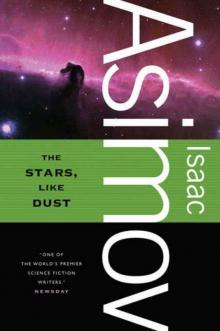 The Stars, Like Dust
The Stars, Like Dust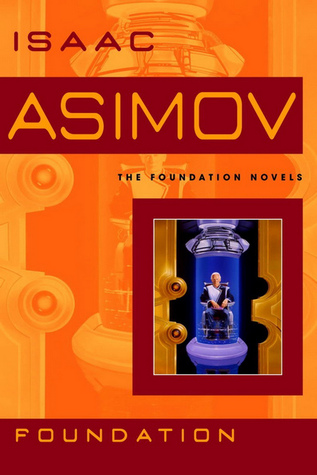 Foundation
Foundation David Starr Space Ranger
David Starr Space Ranger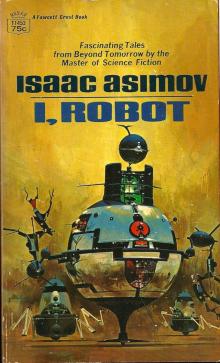 I, Robot
I, Robot Puzzles of the Black Widowers
Puzzles of the Black Widowers Casebook of the Black Widowers
Casebook of the Black Widowers The Ugly Little Boy
The Ugly Little Boy Azazel
Azazel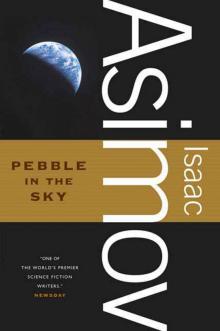 Pebble in the Sky
Pebble in the Sky Foundation and Empire
Foundation and Empire The Complete Robot
The Complete Robot Fantastic Voyage
Fantastic Voyage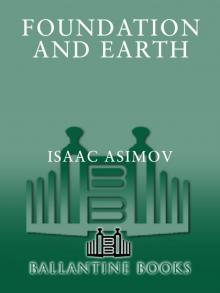 Foundation and Earth
Foundation and Earth The Naked Sun
The Naked Sun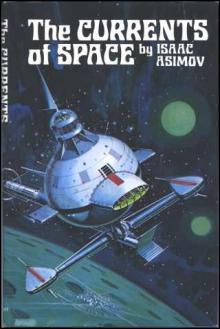 The Currents of Space
The Currents of Space Foundation's Edge
Foundation's Edge The Robots of Dawn
The Robots of Dawn Nightfall
Nightfall The Caves of Steel
The Caves of Steel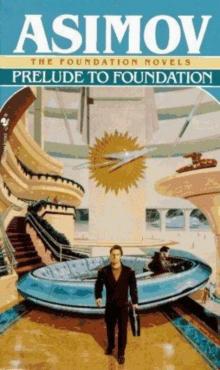 Prelude to Foundation
Prelude to Foundation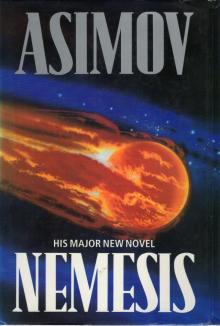 Nemesis
Nemesis Robot Dreams
Robot Dreams More Tales of the Black Widowers
More Tales of the Black Widowers The Complete Stories
The Complete Stories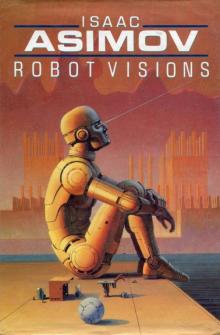 Robot Visions
Robot Visions Lucky Starr And The Moons of Jupiter
Lucky Starr And The Moons of Jupiter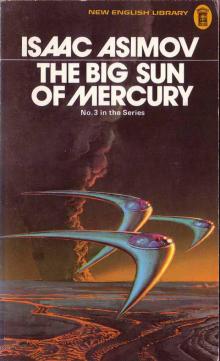 Lucky Starr and the Big Sun of Mercury
Lucky Starr and the Big Sun of Mercury The End of Eternity
The End of Eternity The Bicentennial Man and Other Stories
The Bicentennial Man and Other Stories Lucky Starr And The Rings Of Saturn
Lucky Starr And The Rings Of Saturn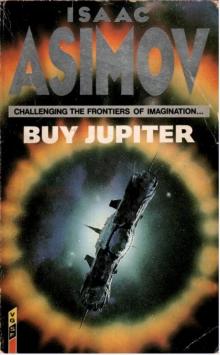 Buy Jupiter and Other Stories
Buy Jupiter and Other Stories Forward the Foundation
Forward the Foundation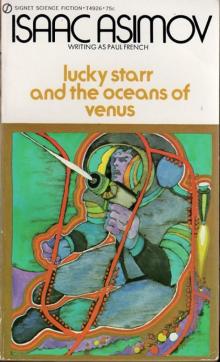 Lucky Starr and the Oceans of Venus
Lucky Starr and the Oceans of Venus The Positronic Man
The Positronic Man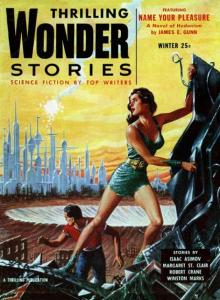 The Portable Star
The Portable Star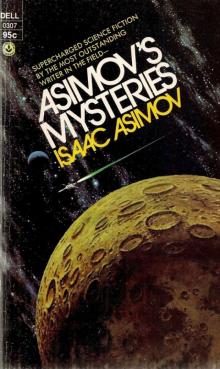 Asimovs Mysteries
Asimovs Mysteries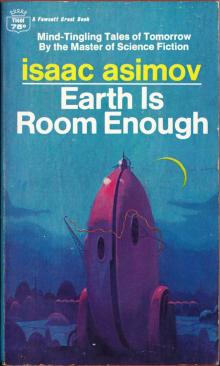 Earth Is Room Enough
Earth Is Room Enough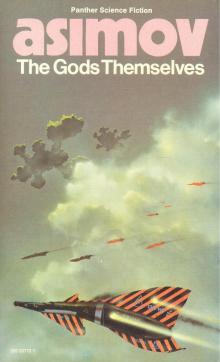 The Gods Themselves
The Gods Themselves Youth
Youth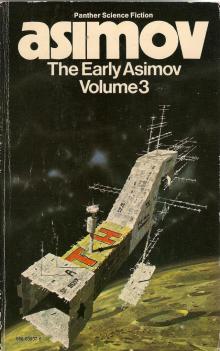 The Early Asimov Volume 3
The Early Asimov Volume 3 The Winds of Change and Other Stories
The Winds of Change and Other Stories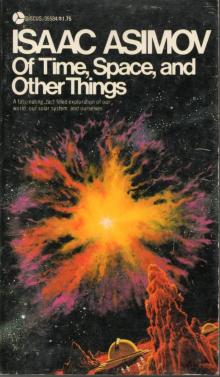 Of Time, Space, and Other Things
Of Time, Space, and Other Things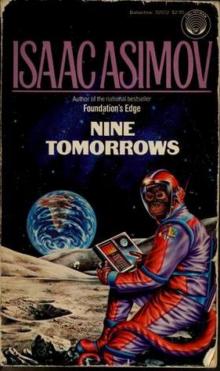 Nine Tomorrows
Nine Tomorrows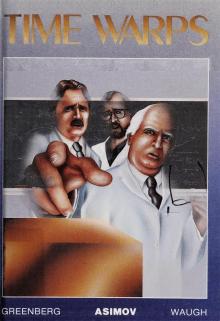 Time Warps
Time Warps Robots and Empire
Robots and Empire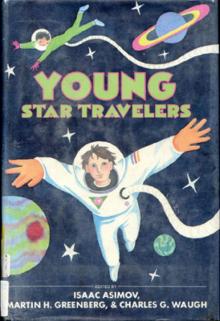 Young Star Travelers
Young Star Travelers Fantastic Voyage II: Destination Brain
Fantastic Voyage II: Destination Brain Second Foundation
Second Foundation The Rest of the Robots
The Rest of the Robots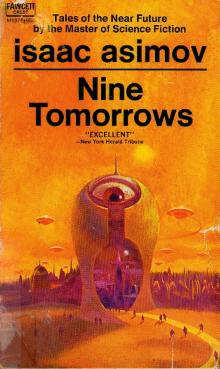 NINE TOMORROWS Tales of the Near Future
NINE TOMORROWS Tales of the Near Future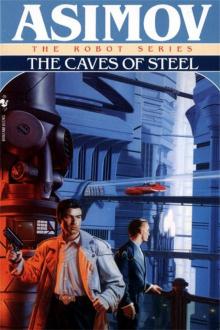 Daneel Olivaw 1 - The Caves of Steel
Daneel Olivaw 1 - The Caves of Steel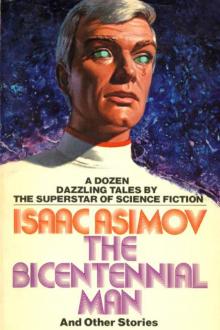 THE BICENTENNIAL MAN
THE BICENTENNIAL MAN David Starr Space Ranger (lucky starr)
David Starr Space Ranger (lucky starr) David Starr Space Ranger (ls)
David Starr Space Ranger (ls)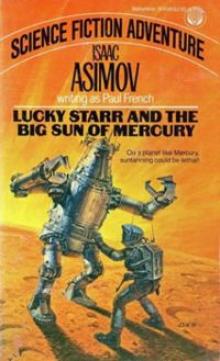 Lucky Starr And The Big Sun Of Mercury ls-4
Lucky Starr And The Big Sun Of Mercury ls-4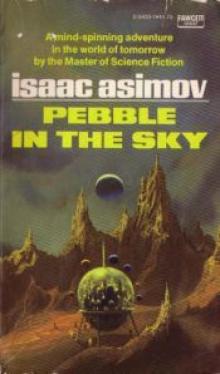 Pebble In The Sky te-1
Pebble In The Sky te-1 Asimov’s Future History Volume 9
Asimov’s Future History Volume 9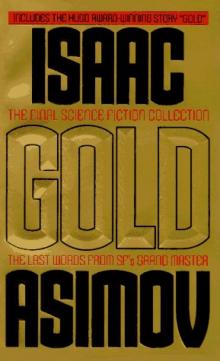 Gold: The Final Science Fiction Collection
Gold: The Final Science Fiction Collection Foundation and Earth f-7
Foundation and Earth f-7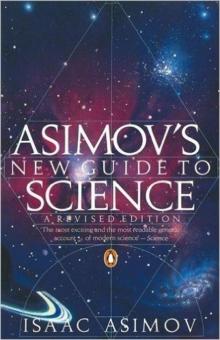 Asimov's New Guide to Science
Asimov's New Guide to Science STORM OVER WARLOCK
STORM OVER WARLOCK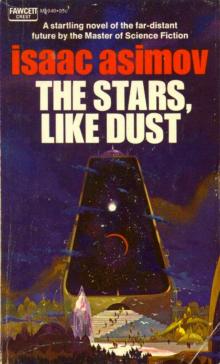 Stars, Like Dust
Stars, Like Dust Norby The Mixed-Up Robot
Norby The Mixed-Up Robot Found!
Found! Asimov’s Future History Volume 11
Asimov’s Future History Volume 11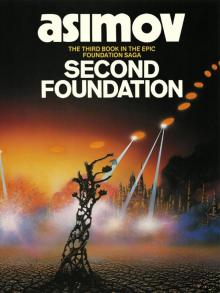 Second Foundation f-5
Second Foundation f-5 Asimov’s Future History Volume 15
Asimov’s Future History Volume 15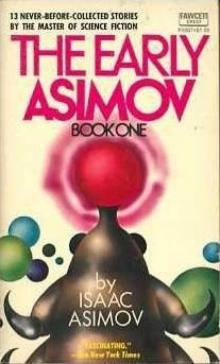 The Early Asimov. Volume 1
The Early Asimov. Volume 1 Secound Foundation
Secound Foundation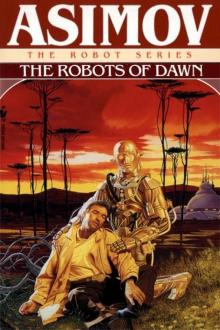 Daneel Olivaw 3 - The Robots of Dawn
Daneel Olivaw 3 - The Robots of Dawn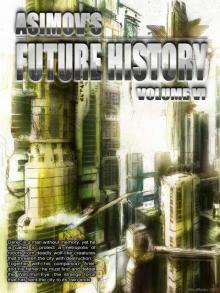 Asimov’s Future History Volume 6
Asimov’s Future History Volume 6 The Early Asimov. Volume 2
The Early Asimov. Volume 2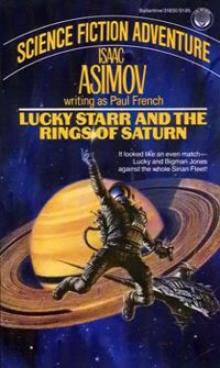 Lucky Starr And The Rings Of Saturn ls-6
Lucky Starr And The Rings Of Saturn ls-6 100 Malicious Little Mysteries
100 Malicious Little Mysteries Forward the Foundation f-2
Forward the Foundation f-2 I.Asimov: A Memoir
I.Asimov: A Memoir Foundation's Edge f-6
Foundation's Edge f-6 Lucky Starr and the Pirates of the Asteroids ls-2
Lucky Starr and the Pirates of the Asteroids ls-2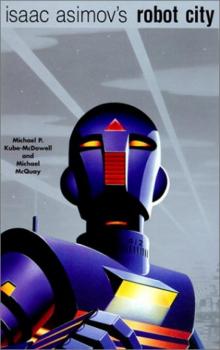 Robot City 1 & 2
Robot City 1 & 2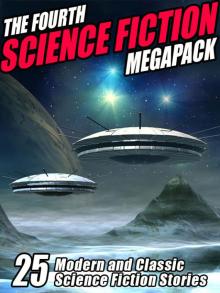 The Fourth Science Fiction Megapack
The Fourth Science Fiction Megapack Asimov’s Future History Volume 16
Asimov’s Future History Volume 16 The Dim Rumble
The Dim Rumble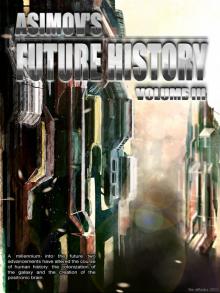 Asimov's Future History Volume 3
Asimov's Future History Volume 3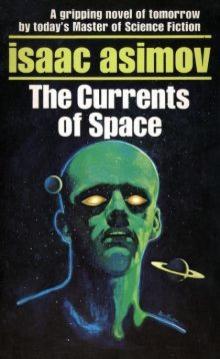 The Currents Of Space te-3
The Currents Of Space te-3 Asimov’s Guide To Shakespear. Volume 1
Asimov’s Guide To Shakespear. Volume 1 Asimov’s Future History Volume 13
Asimov’s Future History Volume 13 Asimov’s Future History Volume 12
Asimov’s Future History Volume 12 The Secret Sense
The Secret Sense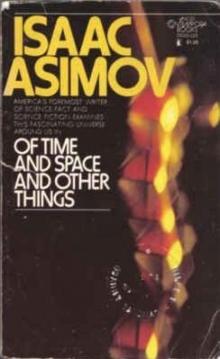 Of Time and Space and Other Things
Of Time and Space and Other Things Norby tnc-2
Norby tnc-2 Norby The Mixed-Up Robot tnc-1
Norby The Mixed-Up Robot tnc-1 Misbegotten Missionary
Misbegotten Missionary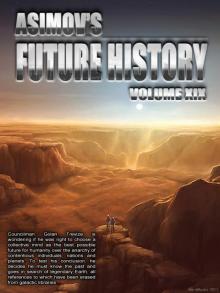 Asimov’s Future History Volume 19
Asimov’s Future History Volume 19 Fantastic Voyage II: Destination Brain fv-2
Fantastic Voyage II: Destination Brain fv-2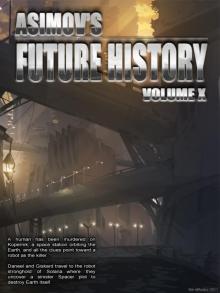 Asimov’s Future History Volume 10
Asimov’s Future History Volume 10 Asimov's Future History Volume 2
Asimov's Future History Volume 2 Feeling of Power
Feeling of Power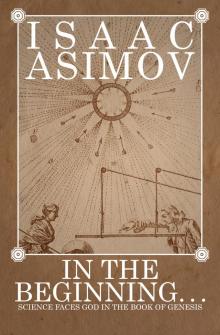 In the Beginning
In the Beginning The Caves of Steel trs-1
The Caves of Steel trs-1 Asimov's Future History Vol 2
Asimov's Future History Vol 2 Caliban c-1
Caliban c-1 The Gentle Vultures
The Gentle Vultures Utopia c-3
Utopia c-3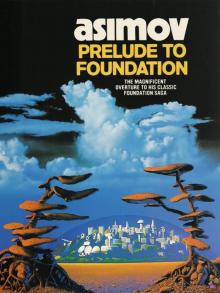 Prelude to Foundation f-1
Prelude to Foundation f-1 Short Stories Vol.1
Short Stories Vol.1 Asimov’s Future History Volume 8
Asimov’s Future History Volume 8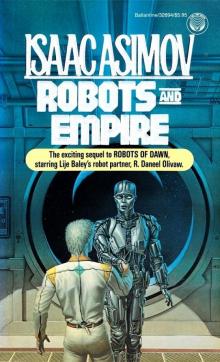 Daneel Olivaw 4 - Robots and Empire
Daneel Olivaw 4 - Robots and Empire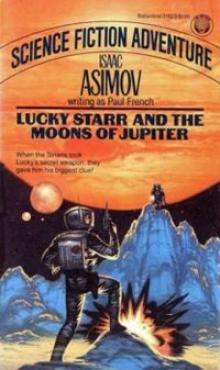 Lucky Starr The And The Moons of Jupiter ls-5
Lucky Starr The And The Moons of Jupiter ls-5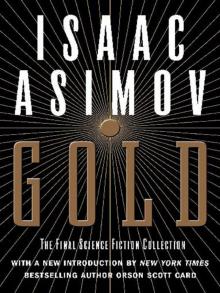 Gold
Gold Asimov’s Future History Volume 4
Asimov’s Future History Volume 4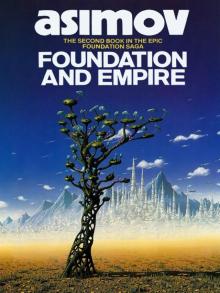 Foundation and Empire f-4
Foundation and Empire f-4 Potential
Potential Asimov’s Future History Volume 14
Asimov’s Future History Volume 14 Asimov’s Future History Volume 7
Asimov’s Future History Volume 7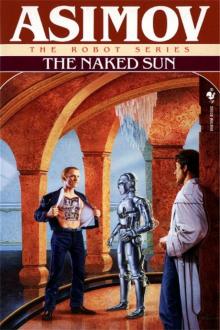 Daneel Olivaw 2 - The Naked Sun
Daneel Olivaw 2 - The Naked Sun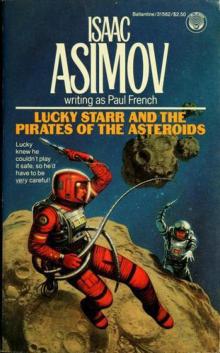 Lucky Starr and the Pirates of the Asteroids
Lucky Starr and the Pirates of the Asteroids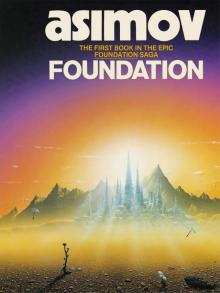 Foundation f-3
Foundation f-3 All the Troubles of the World
All the Troubles of the World Cleon the Emperor
Cleon the Emperor Asimov's Future History Volume 5
Asimov's Future History Volume 5 Asimov’s Future History Volume 20
Asimov’s Future History Volume 20 Robots and Empire trs-4
Robots and Empire trs-4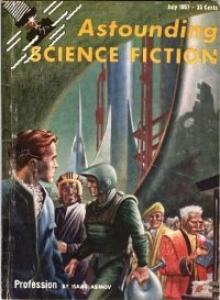 Profession
Profession It's Been a Good Life
It's Been a Good Life The Robots of Dawn trs-3
The Robots of Dawn trs-3 Lucky Starr And The Oceanf Of Venus ls-3
Lucky Starr And The Oceanf Of Venus ls-3 The Naked Sun trs-2
The Naked Sun trs-2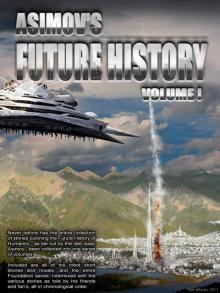 Asimov's Future History Volume 1
Asimov's Future History Volume 1